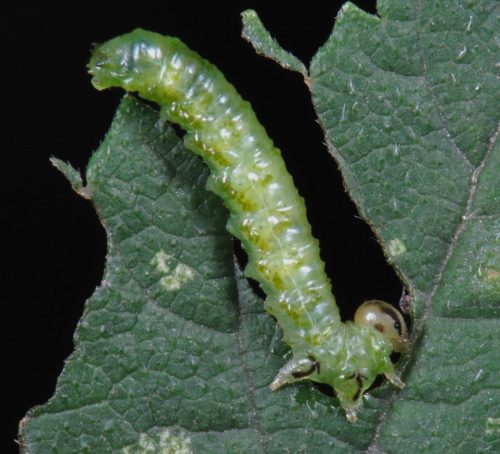Elm zigzag sawfly, this five-millimeter sawfly is native to East Asia and was first spotted in Europe just before World War II.
Elm zigzag sawfly (Aproceros leucopoda). This five-mm-long sawfly is native to East Asia and was first spotted in Europe (Hungary and Poland) just before World War II. Meanwhile, the elm zigzag sawfly is common in Europe. In general, the sawflies cause little damage to elms (the host plant). As these sawflies become more common, the likelihood of damage to elms increases, as in some areas of England. Severe infestation weakens the elm, making it more susceptible to Dutch elm disease.
The females of Elm zigzag sawfly are active from April to mid-September. During that period, females produce an average of five generations. The larvae (caterpillars) hibernate as cocoons in the ground.
The caterpillar like larvae of the elm zig zag sawfly live off the leaves of the elm and make the characteristic zigzag pattern.
The parasitic fly (Blondelia nigripes) is among the natural enemies of the elm zigzag sawfly.
Where to find
- Elm
- Dutch elm(Ulmus x hollandica)
- Wych elm (Ulmus glabra)
- European white elm (Ulmus laevis)
- Field elm(Ulmus minor)
- Siberian elm (Ulmus pumila)
- David elm (Ulmus daviana)
Control
In view of the limited damage that the elm zigzag sawfly generally causes, no control is necessary.
Prevention
Does not apply.

